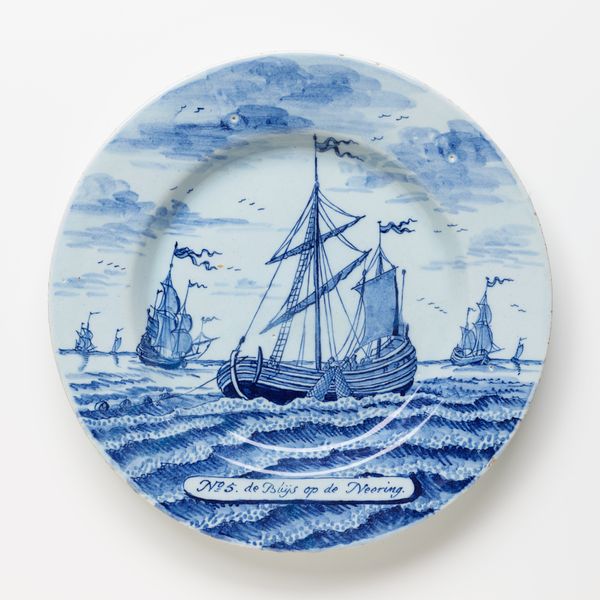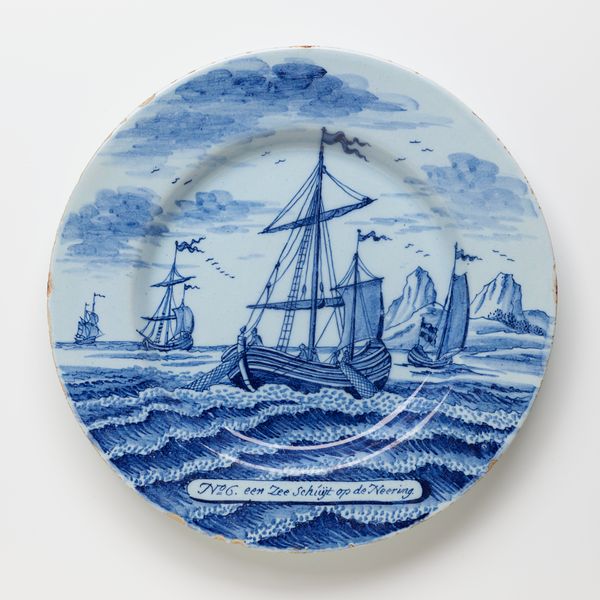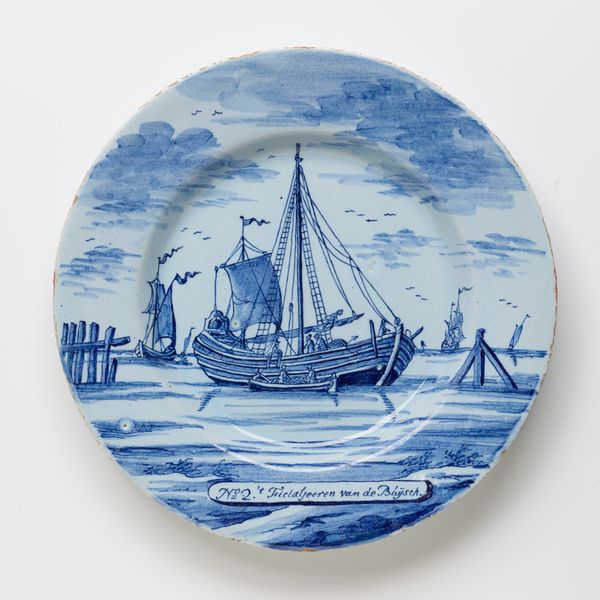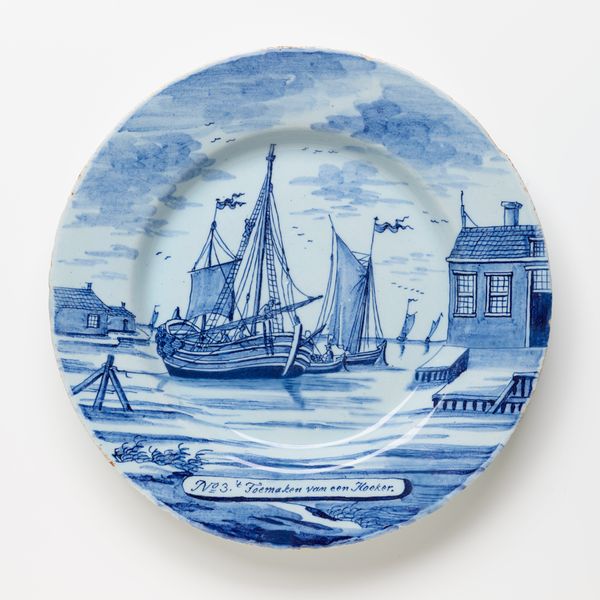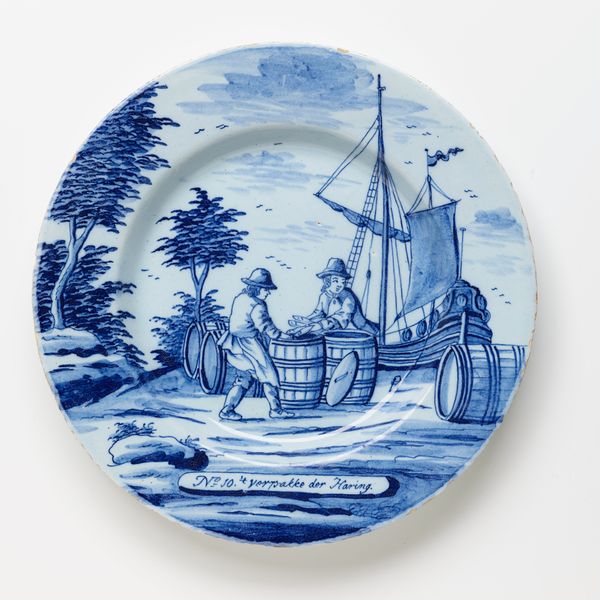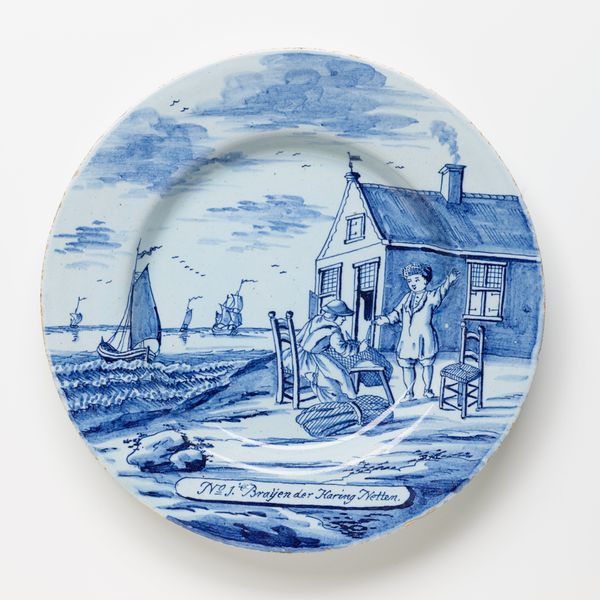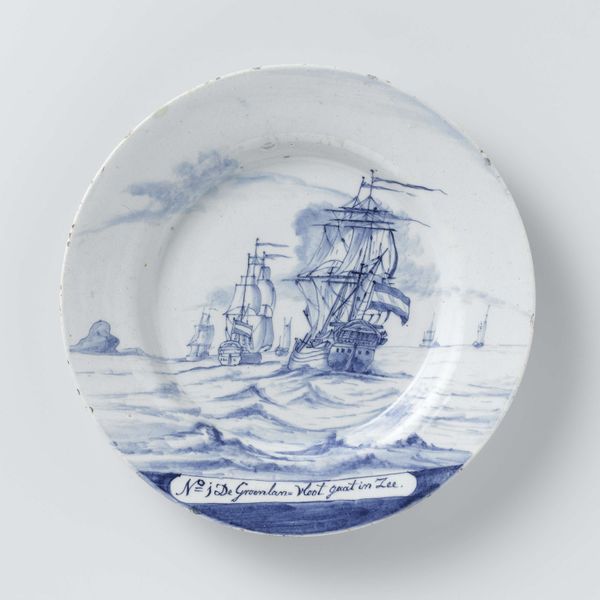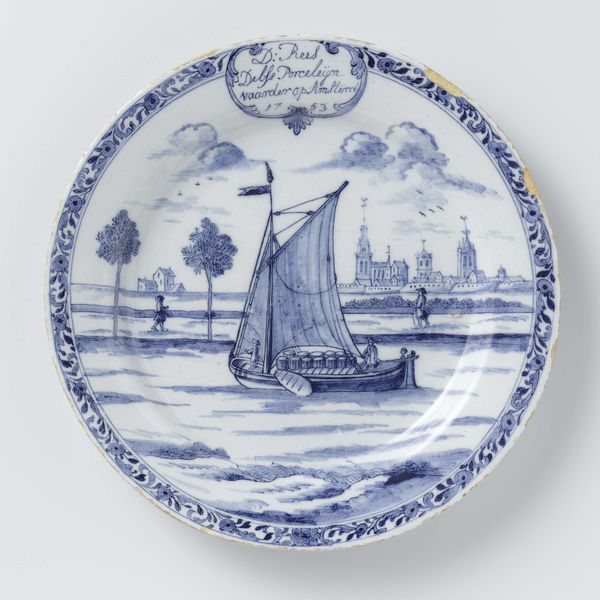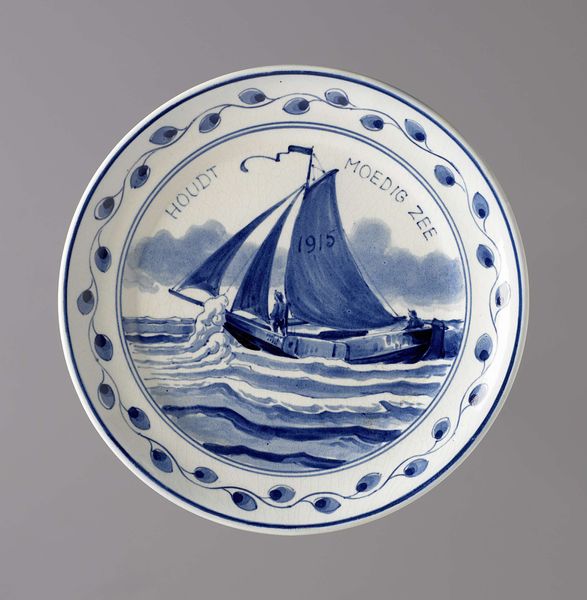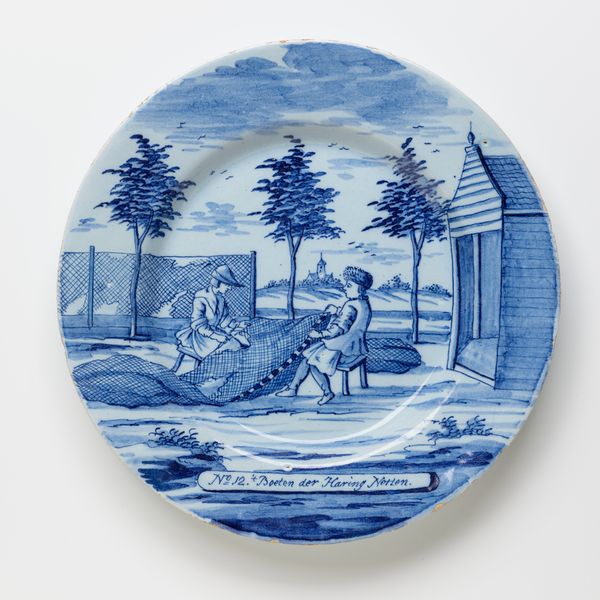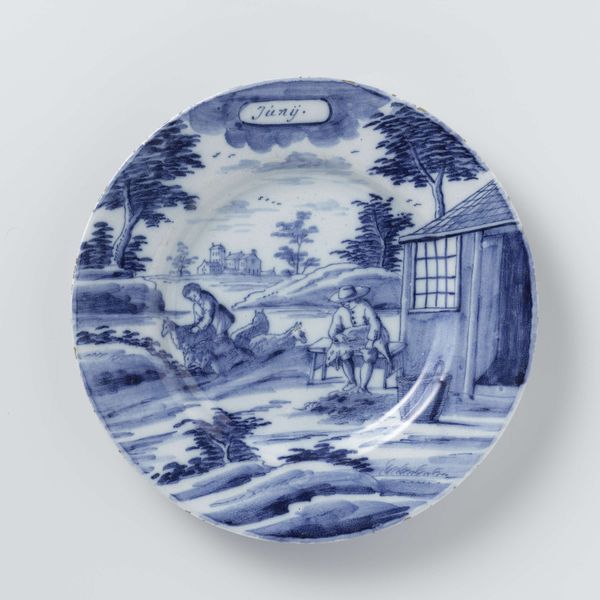
ceramic
#
dutch-golden-age
#
blue and white
#
ceramic
#
orientalism
Dimensions: 1 × 9 × 9 in. (2.54 × 22.86 × 22.86 cm)
Copyright: Public Domain
Curator: Immediately, I see a feeling of expansive sky and restless ocean. A monochrome, hypnotic bluescape of crashing waves, little birds—or are they memories taking flight? Editor: This plate, made of ceramic, was produced around 1780 by the Porcelain Axe (Porceleyne Bijl) Factory. Titled “No. 7,” it resides here at the Minneapolis Institute of Art. Curator: Porcelain, you say? It has a delicate weight to the scene, doesn't it? This potent seascape on a thing so breakable! And these miniature ships! It gives you this feeling, this...precious vulnerability, doesn't it? Editor: Absolutely, the object’s materiality heightens its significance. Considering the prevalence of Dutch maritime trade in the 18th century, this plate serves almost as a piece of propaganda. Curator: Propaganda as décor! I adore the thought of such grand ambitions resting amongst teacups. Do you think that these little boats were heading somewhere important? It feels like a fleet leaving, but on a very contained scale! Editor: Without question, trade routes and naval power defined the Dutch Golden Age, a reality which factories like the Porcelain Axe sought to both emulate and capitalize on by mirroring popular orientalist art through the familiar blue-and-white of Delftware. These everyday objects normalized trade relationships as being vital to Dutch life. Curator: Blue-and-white…it’s almost dreamy isn’t it? Like it's showing a vision! Was every dinner plate from this factory a political statement? I wonder, what would the diners have spoken about when eating off these kinds of dishes? Editor: That’s hard to determine from a remove of several centuries, but by viewing the history of the image itself—its context, manufacture, and intended audience—we can begin to perceive some of the deeper meanings inherent in these kinds of domestic objects. Curator: The image on this small plate invites you to travel to distant harbors while remaining in your familiar spaces, it can be a reminder that you have the potential to traverse both imaginative seas and very real ones, simultaneously. Editor: Indeed! And, perhaps now, we should allow other people to traverse their own interpretive landscapes with this art, too.
Comments
minneapolisinstituteofart almost 2 years ago
⋮
This series of twelve plates is painted with scenes related to fishing for herring. While undistinguished in appearance, this silver fish was an abundant source of food in the North Sea and supported a vast fishing industry in the Netherlands. Herring fishing accounted for such a large percentage of the wealth of the Dutch Republic that Amsterdam was said to have been built on herring bones.
Join the conversation
Join millions of artists and users on Artera today and experience the ultimate creative platform.

